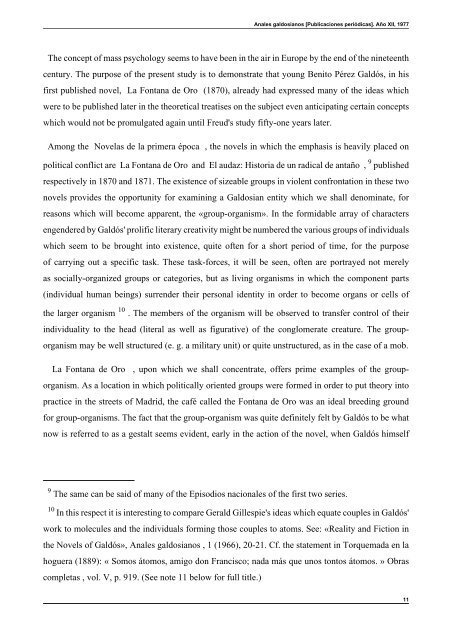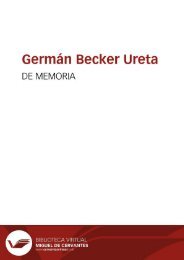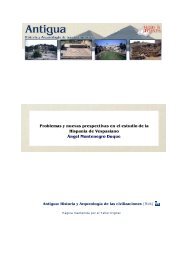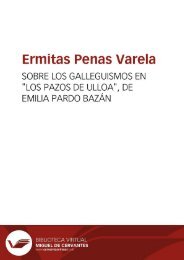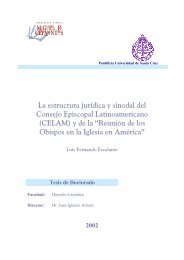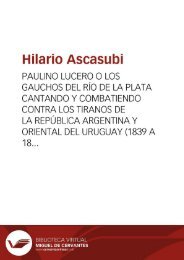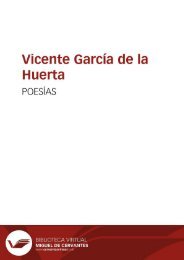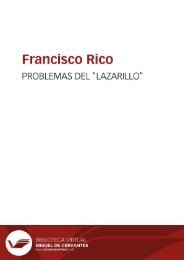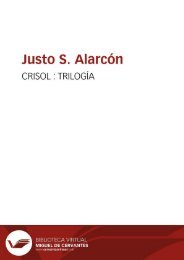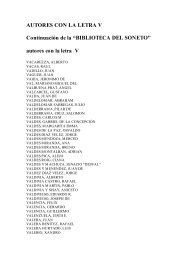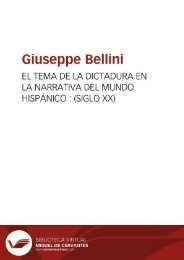You also want an ePaper? Increase the reach of your titles
YUMPU automatically turns print PDFs into web optimized ePapers that Google loves.
Anales galdosianos [Publicaciones periódicas]. Año XII, 1977<br />
The concept of mass psychology seems to have been in the air in Europe by the end of the nineteenth<br />
century. The purpose of the present study is to demonstrate that young Benito Pérez <strong>Galdós</strong>, in his<br />
first published novel, La Fontana de Oro (1870), already had expressed many of the ideas which<br />
were to be published later in the theoretical treatises on the subject even anticipating certain concepts<br />
which would not be promulgated again until Freud's study fifty-one years later.<br />
Among the Novelas de la primera época , the novels in which the emphasis is heavily placed on<br />
political conflict are La Fontana de Oro and El audaz: Historia de un radical de antaño , 9 published<br />
respectively in 1870 and 1871. The existence of sizeable groups in violent confrontation in these two<br />
novels provides the opportunity for examining a Galdosian entity which we shall denominate, for<br />
reasons which will become apparent, the «group-organism». In the formidable array of characters<br />
engendered by <strong>Galdós</strong>' prolific literary creativity might be numbered the various groups of individuals<br />
which seem to be brought into existence, quite often for a short period of time, for the purpose<br />
of carrying out a specific task. These task-forces, it will be seen, often are portrayed not merely<br />
as socially-organized groups or categories, but as living organisms in which the component parts<br />
(individual human beings) surrender their personal identity in order to become organs or cells of<br />
the larger organism 10 . The members of the organism will be observed to transfer control of their<br />
individuality to the head (literal as well as figurative) of the conglomerate creature. The group-<br />
organism may be well structured (e. g. a military unit) or quite unstructured, as in the case of a mob.<br />
La Fontana de Oro , upon which we shall concentrate, offers prime examples of the group-<br />
organism. As a location in which politically oriented groups were formed in order to put theory into<br />
practice in the streets of Madrid, the café called the Fontana de Oro was an ideal breeding ground<br />
for group-organisms. The fact that the group-organism was quite definitely felt by <strong>Galdós</strong> to be what<br />
now is referred to as a gestalt seems evident, early in the action of the novel, when <strong>Galdós</strong> himself<br />
9 The same can be said of many of the Episodios nacionales of the first two series.<br />
10 In this respect it is interesting to compare Gerald Gillespie's ideas which equate couples in <strong>Galdós</strong>'<br />
work to molecules and the individuals forming those couples to atoms. See: «Reality and Fiction in<br />
the Novels of <strong>Galdós</strong>», Anales galdosianos , 1 (1966), 20-21. Cf. the statement in Torquemada en la<br />
hoguera (1889): « Somos átomos, amigo don Francisco; nada más que unos tontos átomos. » Obras<br />
completas , vol. V, p. 919. (See note 11 below for full title.)<br />
11


